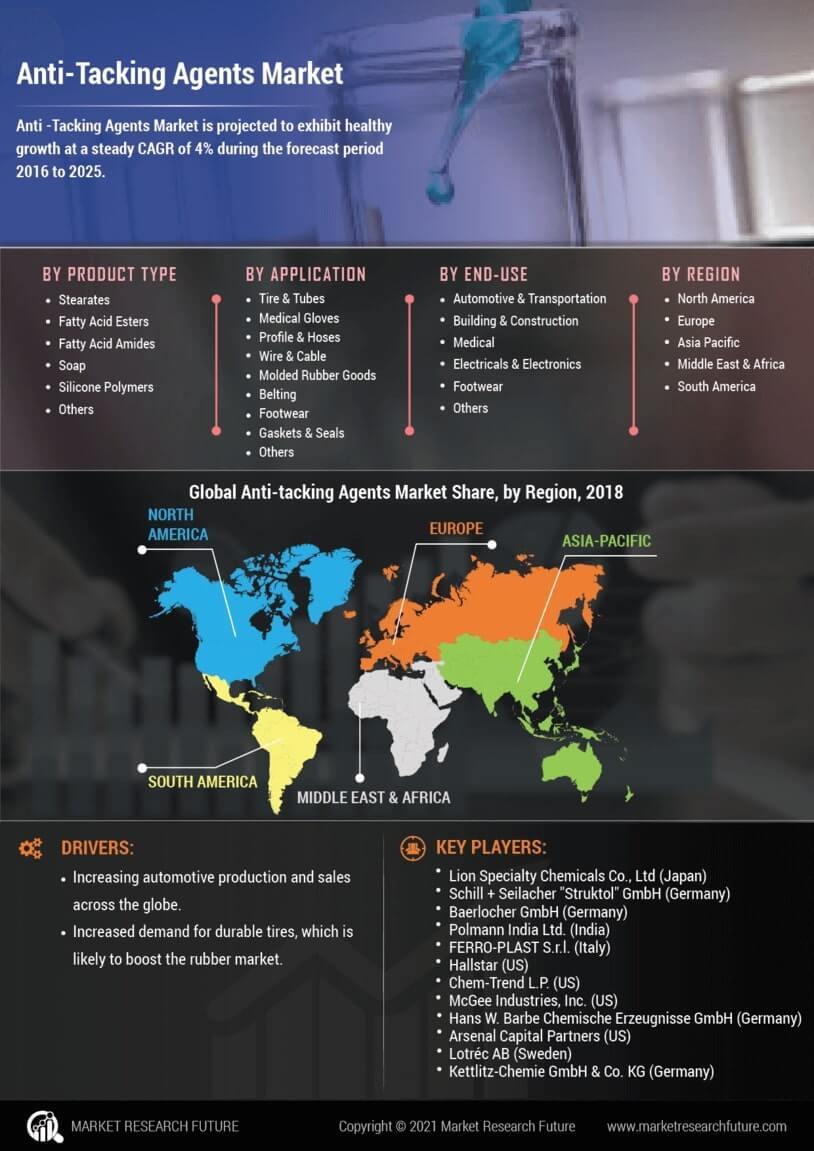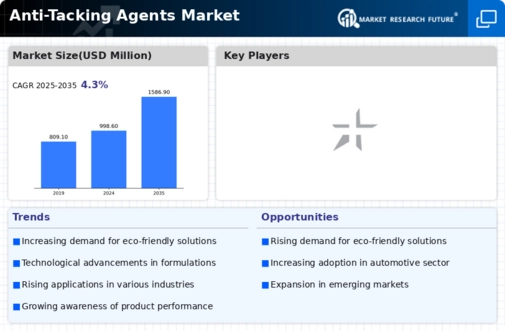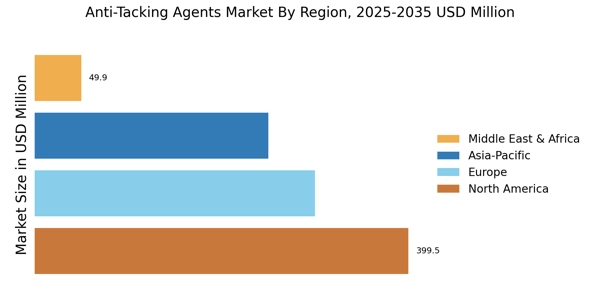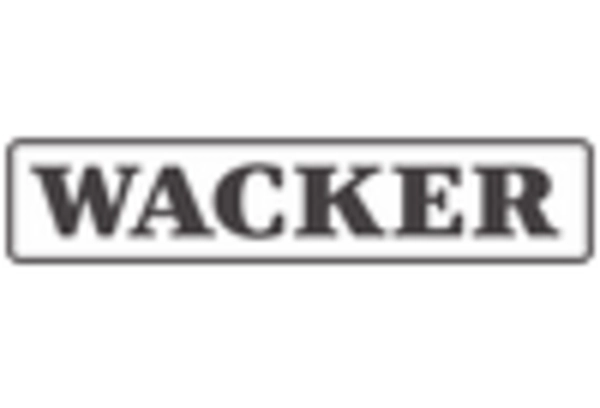Growth in the Automotive Sector
The automotive sector is witnessing substantial growth, which is likely to drive the Anti-Tacking Agents Market. As vehicle manufacturers focus on enhancing the performance and durability of automotive components, the use of anti-tacking agents in the production of various materials is becoming increasingly important. These agents help in preventing adhesion during the manufacturing process, ensuring that components meet stringent quality standards. In 2025, the automotive industry is expected to continue its upward trajectory, fueled by advancements in technology and increasing consumer demand for innovative vehicles. This growth presents a significant opportunity for anti-tacking agents, as manufacturers seek to improve their production processes and product offerings.
Expansion of the Packaging Industry
The expansion of the packaging industry is a significant driver for the Anti-Tacking Agents Market. With the increasing demand for packaged goods across various sectors, including food and beverages, pharmaceuticals, and consumer goods, the need for effective anti-tacking solutions has become paramount. In 2025, the packaging sector is anticipated to continue its robust growth, leading to a heightened demand for anti-tacking agents that prevent adhesion and ensure product integrity. This trend is particularly evident in flexible packaging applications, where anti-tacking agents play a crucial role in maintaining the quality and usability of packaged products. As the packaging industry evolves, the demand for specialized anti-tacking agents is likely to rise.
Rising Demand from the Textile Industry
The textile industry is experiencing a resurgence, which is positively impacting the Anti-Tacking Agents Market. As fashion trends evolve and consumer preferences shift towards high-quality textiles, manufacturers are increasingly utilizing anti-tacking agents to enhance the performance of their products. These agents are essential in preventing fabric adhesion during processing, thereby improving production efficiency and product quality. In 2025, the textile sector is projected to expand, driven by innovations in fabric technology and sustainable practices. This growth is expected to create new opportunities for anti-tacking agents, as textile manufacturers seek to optimize their processes and meet consumer demands for superior quality.
Increasing Demand for Eco-Friendly Products
The rising consumer preference for eco-friendly and sustainable products is a key driver in the Anti-Tacking Agents Market. As manufacturers strive to meet environmental regulations and consumer expectations, the demand for biodegradable and non-toxic anti-tacking agents is likely to increase. This shift towards sustainability is not only a response to regulatory pressures but also reflects a broader societal trend towards environmental consciousness. In 2025, the market for eco-friendly anti-tacking agents is projected to grow significantly, as companies seek to enhance their product offerings while minimizing their ecological footprint. This trend is expected to drive innovation in formulations, leading to the development of new products that align with sustainability goals.
Technological Innovations in Manufacturing Processes
Technological advancements in manufacturing processes are transforming the Anti-Tacking Agents Market. Innovations such as improved mixing techniques and enhanced application methods are enabling manufacturers to produce more effective and efficient anti-tacking agents. These advancements not only improve product performance but also reduce production costs, making it more feasible for companies to invest in high-quality formulations. As a result, the market is witnessing a surge in the introduction of novel anti-tacking agents that cater to specific industry needs. The integration of automation and smart technologies in production lines is also expected to streamline operations, further boosting the market's growth potential.


















Leave a Comment